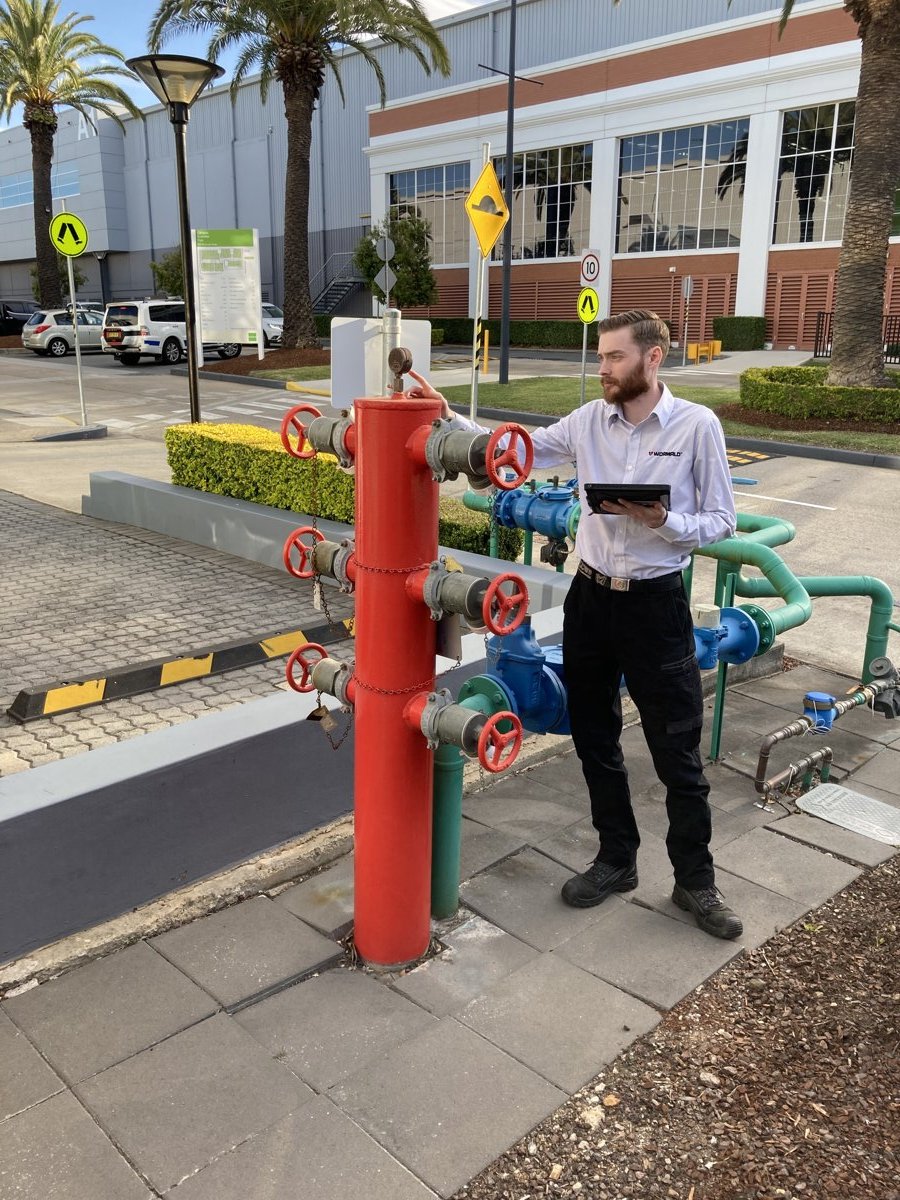Differing fire safety compliance requirements across Australia can cause complexities for building owners and facility managers

Systems and equipment such as fire extinguishers, sprinklers and emergency warning systems need to be maintained in accordance with Australian Standard AS1851, Routine Service of Fire Protection Systems, a set of rules, regulations and safety standards that building owners are expected to meet. However, these standards do not outline how the testing and maintenance is to be reported, or its frequency.
Responsibility for fire safety compliance falls directly to building owners and facility managers, despite there being no standard national approach. The legislation in each Australian state and territory has different requirements which can make managing fire safety compliance for national property portfolios a complex undertaking.
The ramifications for failing to meet building fire safety compliance can be serious because, irrespective of whether there is an existing lease in place, if a building is not fire compliant, occupancy may be denied at the landlord’s expense.
Poorly maintained fire protection systems can ultimately put lives at risk so it’s important building owners and facility managers understand what’s required of them at each location. Most states stipulate the need for an annual building inspection report or occupation certificate that outlines the individual fire safety needs for a specific property. Following is a summary of what is required in each jurisdiction across Australia.
New South Wales
In NSW, the maintenance of fire systems and equipment is the direct responsibility of the building owner who is required to provide an Annual Fire Safety Statement. As of 1 July 2020, the Annual Fire Safety Assessment must be carried out by an accredited practitioner with Fire Safety Assessment (FSA) accreditation, a requirement introduced under the Building and Development Certifiers Act. If the assessment is not completed properly, the building owner may be held liable and fined. Furthermore, multiple accredited practitioners may be needed depending on the level of expertise required for the systems listed on the site’s occupancy certificate. If a building fails to maintain its fire safety obligations, councils and fire brigades have the authority to deny occupancy.
Victoria
Commercial building owners in Victoria are required to prepare an Annual Essential Safety Measures Report (AESMR) using the AESMR form from the Victorian Building Authority (VBA). This form outlines the building’s essential safety measures (ESM) that need to be adhered to in order to meet the state’s compliance requirements. All buildings also have an Occupancy permit which details the maintenance requirements that should be followed.
Queensland
In QLD, a building occupant must provide an annual Occupiers Statement to the Commissioner of the Queensland Fire and Emergency Services (QFES). The statement must verify that the building’s fire safety systems and equipment have been maintained to the relevant building codes. If a building is maintained by the tenant, the tenant is responsible; if the building is occupied by the building owner, then the building owner retains responsibility; and if the building is unoccupied then the building owner must sign the Occupiers Statement.
South Australia
Building owners in South Australia must complete an annual Form 3 compliance certificate to verify essential safety provisions, including fire systems and equipment, have been inspected and any defects addressed.
Western Australia
There is currently no annual fire safety certificate or essential safety measure requirement in place, however, legislation is currently under review with the aim of introducing an annual statement to be carried out for Essential Safety Measures.
Northern Territory
There is currently no annual fire safety certificate required by building owners in the Northern Territory.
Tasmania
The Building Act 2016 stipulates building owners are responsible for setting up and conducting a maintenance schedule for essential building services. For new buildings or alterations or additions to existing buildings, the building surveyor who issues the Occupancy Permit for the building determines a Maintenance Schedule of prescribed essential services specific to the particular building. They will issue that Schedule to the owner using the Approved Form No. 46 (Maintenance Schedule).
There will be random audits to ensure that maintenance tasks have been undertaken. Records of the work will need to be kept and made available for inspection whenever requested by the Director of Building Control, an authorised officer of the Tasmanian Fire Service.
ACT
There is currently no annual fire safety compliance requirement for commercial building owners in the ACT, however, ACT Fire & Rescue has a fire safety guideline outlining maintenance of fire protection systems and equipment (FSG-05), for building owners.
Wormald has decades of experience in helping building owners and managers meet their fire safety obligations. There has never been a more important time to ensure fire systems in buildings continue to be inspected and maintained, ensuring they will operate in accordance with their design intent and purpose.
Wormald continues to perform essential service and maintenance tasks, working closely with businesses, strata managers and landlords to maintain critical fire protection systems in accordance with regulations.
For further information contact Wormald on 133 166.

